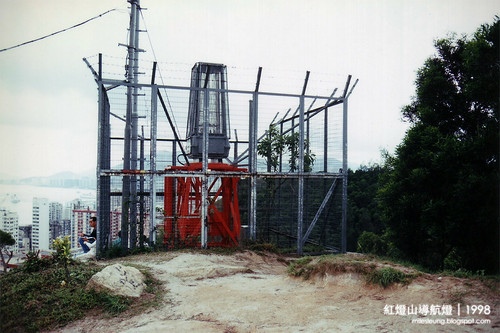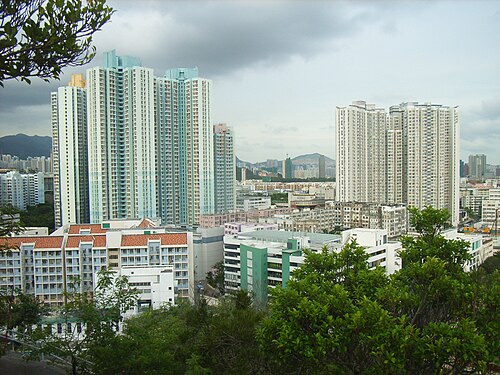‘Checkerboard Hill’ and the runway lights atop the Kowloon City rooftops were well known features along the approach to the former Kai Tak Airport in Hong Kong. But they weren’t the only lights guiding planes across Kowloon and onto runway 13 – there was an illuminated warning beacon atop a hill in Sham Shui Po.

Screencap from 1990 film ‘My Hero’
Garden Hill (Chinese: 喃嘸山) is a 90 metre high hill to the west of Kai Tak Airport in Sham Shui Po.

Google Maps
The hill was named for the Garden Bakery factory below, located at the intersection of Castle Peak Road and Tai Po Road.
At the highest point was the warning beacon.

Photo by Miles Leung (CC BY-NC-ND)
The hill and warning beacon featured in the 1990 Hong Kong film ‘My Hero‘.





Which also captured the view out over Kowloon.

And west towards Kai Tak and ‘Checkerboard Hill‘.

But the scene today is quite different – the entire hill covered with trees.
And following the closure of Kai Tak Airport in 1998 the restriction on building heights was removed, so the apartment blocks of Pak Tin Estate now occupying the airspace once used by approaching aircraft.
Footnote: other warning lights
‘Checkerboard Hill’ is a famous part of the approach to Kai Tak.

And it also had warning lights atop it.

Photo by Miles Leung (CC BY-NC-ND)
Along with a radio navigation tower.

Photo by Miles Leung (CC BY-NC-ND)
To the south was the hill of Woh Chai Shan (窩仔山) in Shek Kip Mei, which also had a warning beacon atop it.

Photo by Miles Leung (CC BY-NC-ND)
As did Red Light Hill (紅燈山) further south in Quarry Hill, near Ho Man Tin.

Photo by Miles Leung (CC BY-NC-ND)
Further reading
A list of buildings with navigation lights installed on them found in “Hong Kong Airport (Control of Obstructions) (Lighting) (Consolidation) Order” dated 1958.
More information on the warning beans and approach lighting around Kowloon, including a Jeppsen approach chart to Kai Tak at Flightsim.to.

Jeppsen chart via Flightsim.to



































